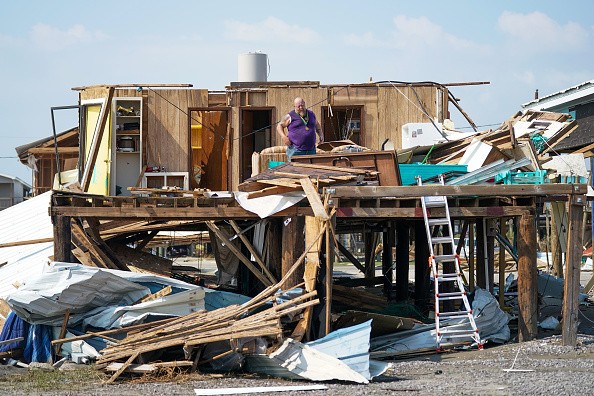A total of 688 people lost their lives in 20 different billion-dollar weather and climate disasters across the contiguous United States last year, the National Oceanic and Atmospheric Administration (NOAA) revealed Monday.

Deadliest Weather Year for the United States
America's greenhouse gas emissions soared by 6 percent in 2021 because of an increase in coal usage and the use of long-haul trucks, leaving the United States even further behind its 2030 objective of decreasing emissions by 30 percent from 1990 levels, according to Phys.org.
Not directly connected, but three separate studies out this week depict a picture of the United States in 2021 as being in turmoil because of climate change.
On Monday, a report from the Rhodium Group said that in 2021, American emissions of heat-trapping gases would rise faster than overall economic activity, making it more difficult to meet America's commitment to reduce emissions by half by 2030 compared to 2005.
According to records dating back to 1980, this was the second most billion-dollar weather disaster and the third most expensive.
Researchers have long argued that human-caused climate change worsens and increases the frequency of extreme weather, and they've found several linkages between the two.
It's said that warmer air and oceans and the disappearance of sea ice affect the jet stream, which delivers and delays storm fronts, makes hurricanes wetter and stronger, and increases the severity of droughts and wildfires in the western states.
Deaths Recorded as a Result of Weather Disasters
Record-breaking heat waves in the Pacific Northwest, deadly cold freezing storms, widespread windstorms known as derechos, four major hurricanes, mudslides, droughts, and a number of wildfires were just some of the extreme weather events that ravaged the United States in 2014.
Extreme weather disasters costing billions of dollars killed twice as many people in 2017 as they did in 2020, when they claimed the lives of 262 people. While Puerto Rico is technically a U.S. territory, Hurricane Maria left more than 3,000 dead there last year.
There are complex cascade events happening every single time, according to Adam Smith, NOAA climatologist and economist. Lots of things are headed in the wrong direction.
There have been 86 billion-dollar weather disasters in the last five years, costing $742 billion in total, an all-time high.

U.S. Greenhouse Gas Emissions
According to another NOAA analysis, 2017 was the fourth warmest year on record in the United States, averaging 54.5 degrees Fahrenheit (12.5 degrees Celsius).
More than a half-dozen metropolitan areas saw their hottest years on record this year. Temperatures in the contiguous United States averaged 39.3 degrees (4.1 degrees Celsius) in December, which was the hottest December on record during the 20th century, by 6.7 degrees.
Kate Larsen, a co-author of the emissions report, attributed the rise in coal use, which was up 17 percent from 2020, to rising natural gas prices.
As Larsen pointed out, it is an illustration of how the world has been riding on cheap natural gas to accelerate coal's decline for the previous 15 years.
Long-haul diesel truck emissions rose by 10% as freight recovered to pre-pandemic rates and are expected to continue to grow in the coming years, Larsen said in an interview.
Even in 2021, the United States' greenhouse gas emissions will continue to decline, despite a dramatic increase in emissions from 2020. For the government to achieve the 50% reduction Biden promised, she said emissions must be decreased rather than increased by 5% a year.
Although she wasn't involved in the studies, climate scientist Natalie Mahowald from Cornell University was in agreement.
Related Article : Gulf Coast to Experience More Frequent and Back-to-Back Hurricanes
For more news, updates about weather diasters and similar topics don't forget to follow Nature World News!
© 2025 NatureWorldNews.com All rights reserved. Do not reproduce without permission.





